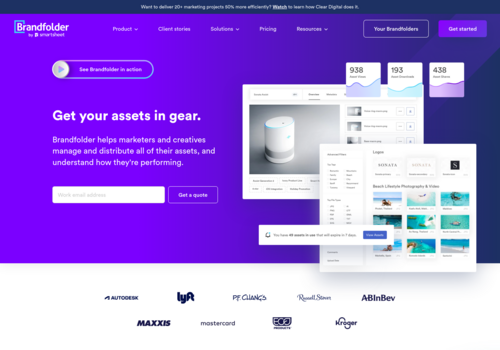# JSONAPIonify
[](https://badge.fury.io/rb/jsonapionify)
[](https://travis-ci.org/brandfolder/jsonapionify)
[](https://codeclimate.com/repos/5672446f137f95309c0067c6/feed)
[](https://codeclimate.com/repos/5672446f137f95309c0067c6/coverage)
JSONAPIonify is a framework for building JSONApi 1.0 compliant
APIs. It can run as a standalone rack app or as part of a larger framework such
as rails. In addition, it auto-generates beautiful documentation.
Live Example:
* [Resource](https://api.brandfolder.com/v2/slug/brandfolder)
* [Documentation](https://api.brandfolder.com/v2/docs) (screenshot below)
[](https://api.brandfolder.com/v2/docs)
## Installation
Add this line to your application's Gemfile:
```ruby
gem 'jsonapionify'
```
And then execute:
$ bundle
## Usage
### Context: Read First
Before we get started with defining an API, you should understand a pattern used heavily throughout JSONAPIonify. This pattern is called a context. A context is a definition of data that is memoized and passed around a request. You may see context used as follows:
```ruby
before :create do |context|
puts context.request.request_method
end
```
Contexts can also call other contexts within their definitions:
```ruby
context :request_method do |context|
context.request.request_method
end
```
JSONApionify already ships with a set of predefined contexts.
### Create an API
Api Definitions are the basis of JSONApi's DSL. They encompass resources that are available and can be run as standalone rack apps or be mounted within a rails app.
```
class MyCompanyApi < JSONAPIonify::Base
# Write a description for your API.
description <<~markdown
A description of your API, that will be available at the top of the documentation.
markdown
# Add some rack middleware
use Rack::SSL::Enforcer
# Handle Authorization
end
```
### Predefined Contexts
#### request_body
The raw body of the request
#### request_object
The JSON parsed into a JSONApionify Structure Object. Keys can be accessed as symbols.
#### id
The id present in the request path, if present.
#### request_id
The id of the requested resource, within the data attribute of the request object.
#### request_attributes
The parsed attributes from the request object. Accessing this context, will also validate the data/structure.
#### request_relationships
The parsed relationships from the request object. Accessing this context, will also validate the data/structure.
#### request_instance
The instance of the object found from the request's data/type and data/id attibutes. This is determined from the resource's defined scope.
#### request_resource
The resource's scope determined from the request's data/type attribute.
#### request_data
The data attribute in the top level object of the request
#### authentication
An object containing the authentication data.
#### links
The links object that will be present in the response.
#### meta
The meta object that will be present in the response.
#### response_object
The jsonapi object that will be used for the response.
#### response_collection
The response for the collection.
## Development
After checking out the repo, run `bin/setup` to install dependencies. Then, run `rake spec` to run the tests. You can also run `bin/console` for an interactive prompt that will allow you to experiment.
To install this gem onto your local machine, run `bundle exec rake install`. To release a new version, update the version number in `version.rb`, and then run `bundle exec rake release`, which will create a git tag for the version, push git commits and tags, and push the `.gem` file to [rubygems.org](https://rubygems.org).
## Contributing
Bug reports and pull requests are welcome on GitHub at https://github.com/brandfolder/jsonapionify. This project is intended to be a safe, welcoming space for collaboration, and contributors are expected to adhere to the [Contributor Covenant](contributor-covenant.org) code of conduct.
## License
The gem is available as open source under the terms of the [MIT License](http://opensource.org/licenses/MIT).